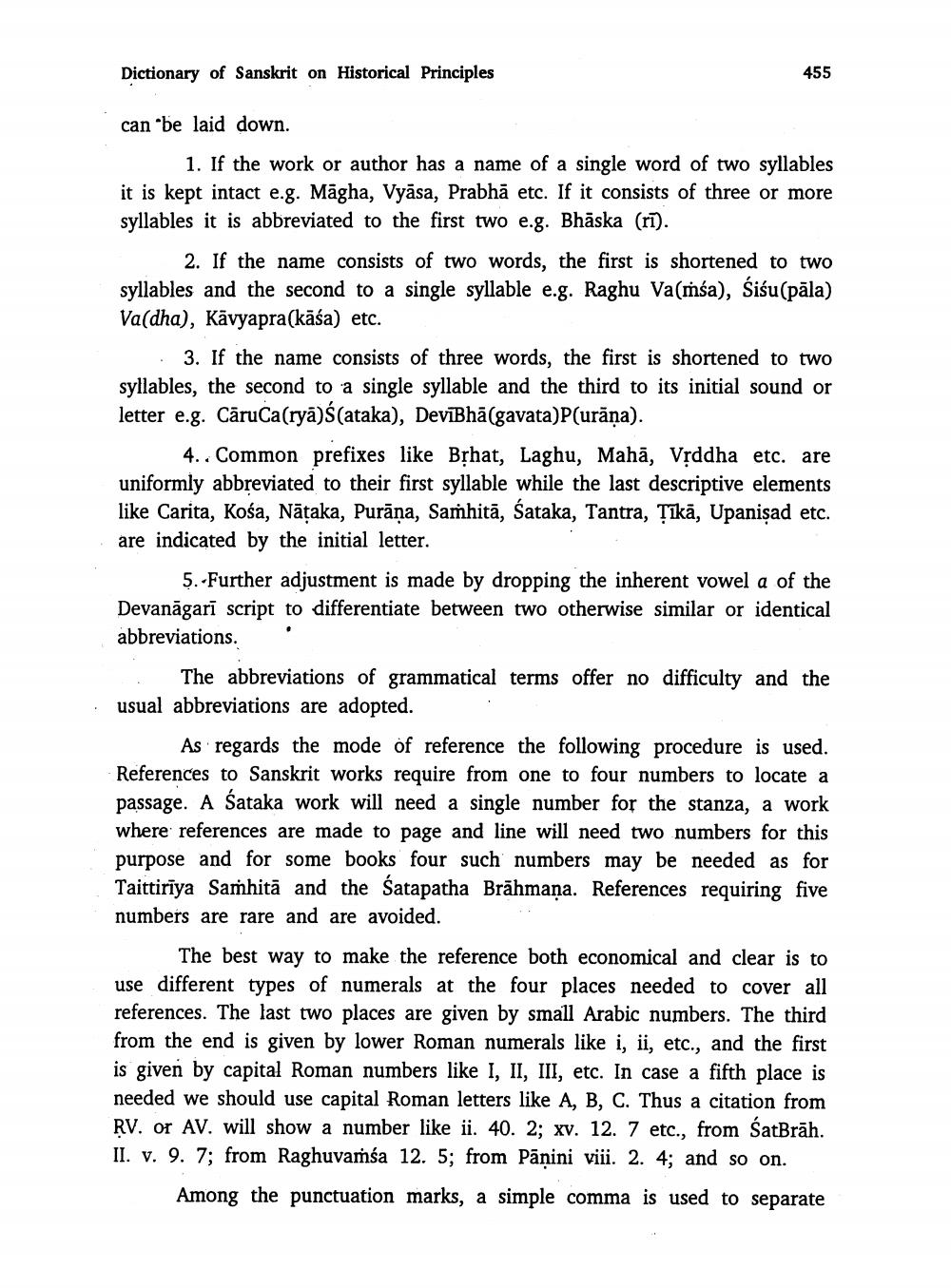________________
Dictionary of Sanskrit on Historical Principles
455
can be laid down.
1. If the work or author has a name of a single word of two syllables it is kept intact e.g. Māgha, Vyāsa, Prabhā etc. If it consists of three or more syllables it is abbreviated to the first two e.g. Bhāska (rī).
2. If the name consists of two words, the first is shortened to two syllables and the second to a single syllable e.g. Raghu Vamsa), śiśu(pāla) Va(dha), Kävyapra(kāśa) etc.
3. If the name consists of three words, the first is shortened to two syllables, the second to a single syllable and the third to its initial sound or letter e.g. CāruCa(ryā)ś(ataka), Devibhā(gavata)P(urāņa).
4.. Common prefixes like Bịhat, Laghu, Mahā, Vțddha etc. are uniformly abbreviated to their first syllable while the last descriptive elements like Carita, Kosa, Nātaka, Purāna, Samhitā, Sataka, Tantra, Tikā, Upanisad etc. are indicated by the initial letter.
5.-Further adjustment is made by dropping the inherent vowel a of the Devanāgarī script to differentiate between two otherwise similar or identical abbreviations.
The abbreviations of grammatical terms offer no difficulty and the usual abbreviations are adopted.
As regards the mode of reference the following procedure is used. References to Sanskrit works require from one to four numbers to locate a passage. A Sataka work will need a single number for the stanza, a work where references are made to page and line will need two numbers for this purpose and for some books four such numbers may be needed as for Taittiriya Samhita and the Satapatha Brāhmana. References requiring five numbers are rare and are avoided.
The best way to make the reference both economical and clear is to use different types of numerals at the four places needed to cover all references. The last two places are given by small Arabic numbers. The third from the end is given by lower Roman numerals like i, ii, etc., and the first is given by capital Roman numbers like I, II, III, etc. In case a fifth place is needed we should use capital Roman letters like A, B, C. Thus a citation from RV. or AV. will show a number like ii. 40. 2; xv. 12. 7 etc., from SatBrāh. II. v. 9. 7; from Raghuvamsa 12. 5; from Pānini viii. 2. 4; and so on.
Among the punctuation marks, a simple comma is used to separate




